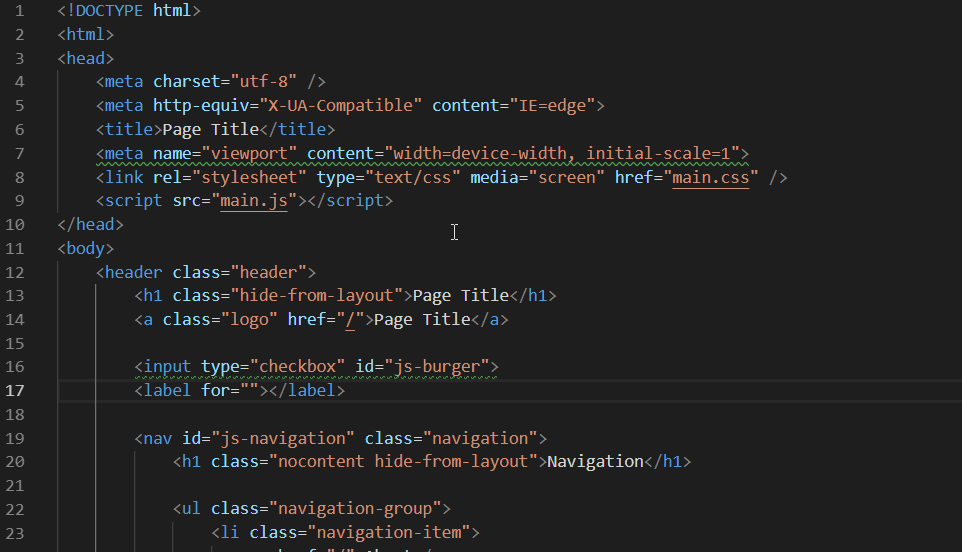We can group the resultset in SQL on multiple column values. All the column values defined as grouping criteria should match with other records column values to group them to a single record. SQL, In SQL, GROUP BY Clause is one of the tools to summarize or aggregate the data series. Count(), and sum() to combine into single or multiple columns. It uses the In the split phase , It divides the groups with its values. The SQL GROUP BY Statement The GROUP BY statement groups rows that have the same values into summary rows, like "find the number of customers in each country".
The GROUP BY statement is often used with aggregate functions to group the result-set by one or more columns. Let us use the aggregate functions in the group by clause with multiple columns. This means given for the expert named Payal, two different records will be retrieved as there are two different values for session count in the table educba_learning that are 750 and 950. The group by clause is most often used along with the aggregate functions like MAX(), MIN(), COUNT(), SUM(), etc to get the summarized data from the table or multiple tables joined together. Grouping on multiple columns is most often used for generating queries for reports, dashboarding, etc. Group by is done for clubbing together the records that have the same values for the criteria that are defined for grouping.
When a single column is considered for grouping then the records containing the same value for that column on which criteria are defined are grouped into a single record for the resultset. GROUP BY enables you to use aggregate functions on groups of data returned from a query. FILTER is a modifier used on an aggregate function to limit the values used in an aggregation. All the columns in the select statement that aren't aggregated should be specified in a GROUP BY clause in the query. The GROUP BY clause groups a set of rows into a set of summary rows by values of columns or expressions. In other words, it reduces the number of rows in the result set.
You often use the GROUP BY clause with aggregate functions such as SUM, AVG, MAX, MIN, and COUNT. Generally, these functions are aggregate functions such as min(),max(),avg(), count(), and sum() to combine into single or multiple columns. Using pandas, we can easily group data using the pandas groupby function. However, when grouping by multiple columns and looking to compute summary statistics, we need to do more work to get code that is easy to use. 10.3 Grouping on Two or More Columns, How do I select multiple columns with just one group in SQL? Grouping is one of the most important tasks that you have to deal with while working with the databases.
To group rows into groups, you use the GROUP BY clause. The GROUP BY clause is an optional clause of the SELECT statement that combines rows into groups based on matching values in specified columns. Pandas comes with a whole host of sql-like aggregation functions you can apply when grouping on one or more columns. This is Python's closest equivalent to dplyr's group_by + summarise logic. Here's a quick example of how to group on one or multiple columns and summarise data with aggregation functions using Pandas. Below is a function which will group and aggregate multiple columns using pandas if you are only working with numerical variables.
In the following code, we will be grouping the data by multiple columns and computing the mean, standard deviation, sum, min, max and various percentiles for the various gorupings. Group-by a command in the SQL relational database standard for collapsing a group of rows that share common field value into a single row. Aggregate functions can be performed on other fields in… multiple-columns when text is split into a number of parallel text columns, rather than one column of text. For CSS Multicolumn layout, use the [css-multicolumn-layout] tag.
You can also use the having clause with the Transact-SQL extension that allows you to omit the group by clause from a query that includes an aggregate in its select list. These scalar aggregate functions calculate values for the table as a single group, not for groups within the table. In database management an aggregate function is a function where the values of multiple rows are grouped together as input on certain criteria to form a single value of more significant meaning. Yes, it is possible to use MySQL GROUP BY clause with multiple columns just as we can use MySQL DISTINCT clause. The only difference is that the result set returns by MySQL query using GROUP BY clause is sorted and in contrast, the result set return by MySQL query using DISTICT clause is not sorted. Pandas groupby is a powerful function that groups distinct sets within selected columns and aggregates metrics from other columns accordingly.
Performing these operations results in a pivot table, something that's very useful in data analysis. However, MySQL enables users to group data not only with a singular column for consideration but also with multiple columns. We will explore this technique in the latter section of this tutorial.
To be perfectly honest, whenever I have to use Group By in a query, I'm tempted to return back to raw SQL. I find the SQL syntax terser, and more readable than the LINQ syntax with having to explicitly define the groupings. In an example like those above, it's not too bad keeping everything in the query straight. However, once I start to add in more complex features, like table joins, ordering, a bunch of conditionals, and maybe even a few other things, I typically find SQL easier to reason about. Once I get to the point where I'm using LINQ to group by multiple columns, my instinct is to back out of LINQ altogether. However, I recognize that this is just my personal opinion.
If you're struggling with grouping by multiple columns, just remember that you need to group by an anonymous object. In SQL, a view is a virtual table based on the result-set of an SQL statement. The fields in a view are fields from one or more real tables in the database. You can add SQL functions, WHERE, and JOIN statements to a view and present the data as if the data were coming from one single table. Often you may want to group and aggregate by multiple columns of a pandas DataFrame.
Fortunately this is easy to do using the pandas.groupby()and.agg()functions. First we'll group by Team with Pandas' groupby function. After grouping we can pass aggregation functions to the grouped object as a dictionary within the agg function. This dict takes the column that you're aggregating as a key, and either a single aggregation function or a list of aggregation functions as its value. Fortunately this is easy to do using the pandas .groupby () and .agg () functions. MySQL COUNT() function with group by on multiple columns The following MySQL statement returns number of publishers in each city for a country.
Grouping operation is performed on country and pub_city column with the use of GROUP BY and then COUNT() counts the number of publishers for each groups. However, when we group by multiple columns and use the pandas describe() function and pandas sum() function, then the return dataframe is a dataframe of dataframes. The GROUP BY statement is often used with aggregate functions (COUNT(),MAX(),MIN(), SUM(),AVG()) to group the result-set by one or more columns. If you've used ASP.NET MVC for any amount of time, you've already encountered LINQ in the form of Entity Framework.
EF uses LINQ syntax when you send queries to the database. While most of the basic database calls in Entity Framework are straightforward, there are some parts of LINQ syntax that are more confusing, like LINQ Group By multiple columns. How to group by two columns in R, You apparently are not interested in taking your Character as a Date variable.
Considering that I'm not wrong you could simply do How to group by multiple columns in dataframe using R and do aggregate function. We can observe that for the expert named Payal two records are fetched with session count as 1500 and 950 respectively. Similar work applies to other experts and records too. Note that the aggregate functions are used mostly for numeric valued columns when group by clause is used. Criteriacolumn1 , criteriacolumn2,…,criteriacolumnj – These are the columns that will be considered as the criteria to create the groups in the MYSQL query.
There can be single or multiple column names on which the criteria need to be applied. We can even mention expressions as the grouping criteria. SQL does not allow using the alias as the grouping criteria in the GROUP BY clause. Note that multiple criteria of grouping should be mentioned in a comma-separated format. An important idea about pivot is that it performs a grouped aggregation based on a list of implicit group-by columns together with the pivot column.
The implicit group-by columns are columns from the FROM clause that do not appear in any aggregate function or as the pivot column. Second, let's consider another important part of the query, the PIVOT clause. The first argument of the PIVOT clause is an aggregate function and the column to be aggregated.
We then specify the pivot column in the FOR sub-clause as the second argument, followed by the IN operator containing the pivot column values as the last argument. Python pandas library makes it easy to work with data and files using Python. Often you may need to group by specific columns in your data.
In this article, we will learn how to group by multiple columns in Python pandas. The group by clause can also be used to remove duplicates. The go to solution for removing duplicate rows from your result sets is to include the distinct keyword in your select statement. It tells the query engine to remove duplicates to produce a result set in which every row is unique. Hopefully this article has been beneficial to be able to use pandas to group and aggregate by multiple columns and summarize both numerical and categorical data with pandas.
They are excluded from aggregate functions automatically in groupby. Aggregate_function – These are the aggregate functions defined on the columns of target_table that needs to be retrieved from the SELECT query. The pivot column is the point around which the table will be rotated, and the pivot column values will be transposed into columns in the output table. The IN clause also allows you to specify an alias for each pivot value, making it easy to generate more meaningful column names. Place all rows with the same values in the department_id column in one group. The following statement groups rows with the same values in both department_id and job_id columns in the same group then returns the rows for each of these groups.
Gravity form is good but its lacking lots of functionality for layout creation. This plugin give multi column function to create within form. One suggestion though, if you can add css box to add css class to column, that will be great. In this short article, we have learnt how to easily group data by multiple columns in Python pandas. Here is a simple command to group by multiple columns col1 and col2 and get count of each unique values for col1 and col2. In this case, we need to create a separate column, say, COUNTER, which counts the groupings.
Here, the grouped result data is sorted by the Total Earning of each group in descending order in mysql group by multiple columns. If you want to break your output into smaller groups, if you specify multiple column names or expressions in the GROUP BY clause. Output in each group must satisfy a specific combination of the expressions listed in the GROUP BY clause. The more columns or expressions entered in the GROUP BY clause, the smaller the groups will be. I have a problem with group by, I want to select multiple columns but group by only one column. The query below is what I tried, but it gave me an error.
When you use a GROUP BY clause, you will get a single result row for each group of rows that have the same value for the expression given in GROUP BY. Consider the following example in which we have used DISTINCT clause in first query and GROUP BY clause in the second query, on 'fname' and 'Lname' columns of the table named 'testing'. The GROUP BY makes the result set in summary rows by the value of one or more columns. Each same value on the specific column will be treated as an individual group. The utility of ORDER BY clause is, to arrange the value of a column ascending or descending, whatever it may the column type is numeric or character. Below is a function which will group and aggregate multiple columns using pandas if you are only working with categorical variables.
The rest of the article is code which will show you how to use pandas to group and aggregate data by multiple columns. Can we use MySQL GROUP BY clause with multiple columns like , Yes, it is possible to use MySQL GROUP BY clause with multiple columns just as we can use MySQL DISTINCT clause. Consider the following example in which we have used DISTINCT clause in first query and GROUP BY clause in the second query, on 'fname' and 'Lname' columns of the table named 'testing'.
MySQL MySQLi Database Yes, it is possible to use MySQL GROUP BY clause with multiple columns just as we can use MySQL DISTINCT clause. The GROUP BY clause divides the rows returned from the SELECTstatement into groups. For each group, you can apply an aggregate function e.g.,SUM() to calculate the sum of items or COUNT()to get the number of items in the groups.
As a result, each of these aggregated values will be mapped into its corresponding cell of row year and column month. Notice that each group row has aggregated values which are explained in a documentation page of their own. When the group is closed, the group row shows the aggregated result. When the group is open, the group row is removed and in its place the child rows are displayed.
To allow closing the group again, the group column knows to display the parent group in the group column only . It's simple to extend this to work with multiple grouping variables. Say you want to summarise player age by team AND position. You can do this by passing a list of column names to groupby instead of a single string value.
The MySQL GROUP BY command is a technique by which we can club records together with identical values based on particular criteria defined for the purpose of grouping. When we try to group data considering only a single column, all the records that possess the same values on which the criteria is defined are coupled together in a single output. When I was first learning MVC, I was coming from a background where I used raw SQL queries exclusively in my work flow. One of the particularly difficult stumbling blocks I had in translating the SQL in my head to LINQ was the Group By statement. What I'd like to do now is to share what I've learned about Group By , especially using LINQ to Group By multiple columns, which seems to give some people a lot of trouble. We'll walk through what LINQ is, and follow up with multiple examples of how to use Group By.
Pandas DataFrame Groupby two columns and get counts, Applying multiple functions to columns in groups. To apply multiple functions to a Here we have grouped Column 1.1, Column 1.2 and Column 1.3 into Column 1 and Column 2.1, Column 2.2 into Column 2. Notice that the output in each column is the min value of each row of the columns grouped together. I.e in Column 1, value of first row is the minimum value of Column 1.1 Row 1, Column 1.2 Row 1 and Column 1.3 Row 1. Introduction to SQL GROUP BY clause Grouping is one of the most important tasks that you have to deal with while working with the databases. The GROUP BY clause is an optional clause of the SELECT statementthat combines rows into groups based on matching values in specified columns.
You can use the GROUP BYclause without applying an aggregate function. The following query gets data from the payment table and groups the result by customer id. We can use HAVING clause to place conditions to decide which group will be the part of final result-set. Also we can not use the aggregate functions like SUM(), COUNT() etc. with WHERE clause. So we have to use HAVING clause if we want to use any of these functions in the conditions.
The following statement groups rows with the same values in both department_id and job_id columns in the same group then return the rows for each of these groups. Once group is created, HAVING clause is used to filter groups based upon condition specified. The INNER JOIN selects all rows from both participating tables as long as there is a match between the columns. An SQL INNER JOIN is same as JOIN clause, combining rows from two or more tables. When working with data, it is very useful to be able to group and aggregate data by multiple columns to understand the various segments of our data.






























No comments:
Post a Comment
Note: Only a member of this blog may post a comment.